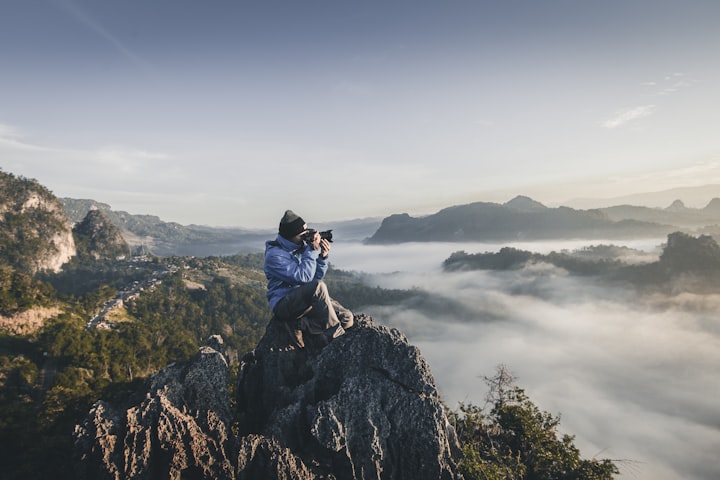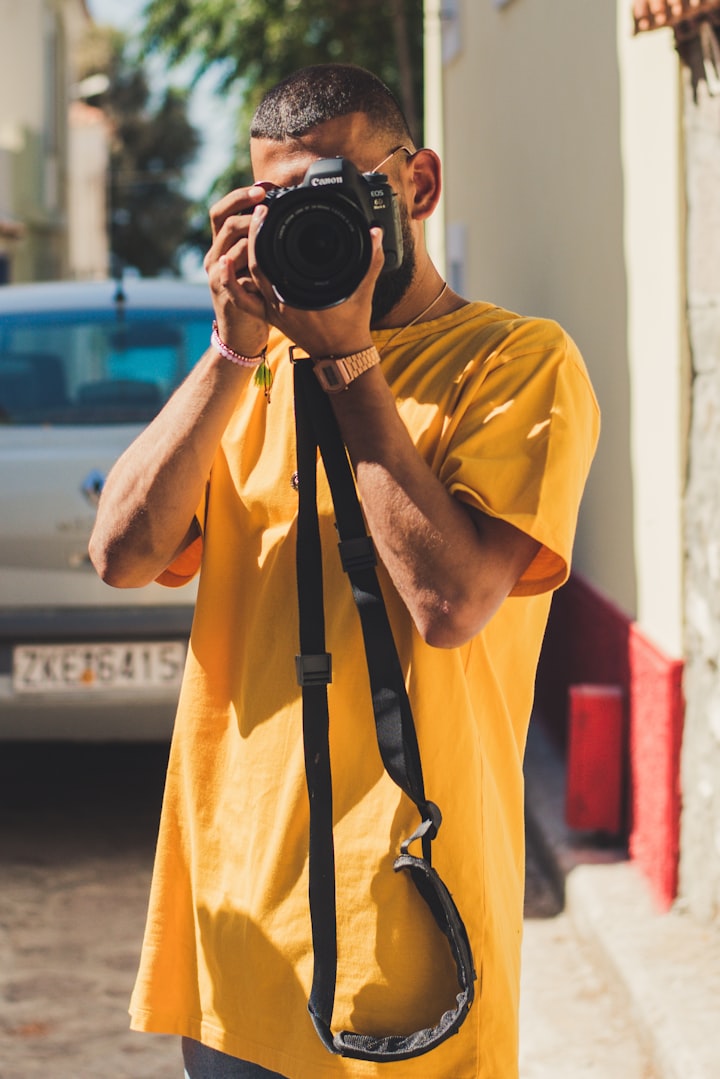A Guide to Portrait Photography (Tips and Ideas Included)
These tips and ideas on portrait photography will come in handy both for beginners and more experienced photographers, regardless of the camera you use.

As with any other photography genre, portraiture takes a lot of time and effort to master. Luckily, you have a lot of subjects to practice on. If you feel that despite all the practice your portrait shots lack something, it’s time to experiment more, but also try to find inspiration such as the tips and ideas in this article.
These tips and ideas on portrait photography will come in handy both for beginners and more experienced photographers, regardless of the camera you use. If your images have a commercial appeal in them, you can even upload them to a stock photography website and start earning as a freelance photographer. This genre of photography is in high demand on stock photography platforms. Don’t forget to ask your models’ permission and fill out a model release form if you’d like to explore this option.
Basics on portrait photography
If you’re just starting with photography, it’s crucial to research the very foundation of what makes up a good photograph. Many people start to shoot straight away, without proper knowledge on how photography works, and might shoot that way for years, trying to understand what’s missing in their pictures.
While such an approach might be okay for amateur photographers, understanding how composition and light work is a must for anyone who is serious about photography. Learning your way around the basic rules of photography will help you understand how to break them wisely for more unconventional shots.
To become a greater photographer, it’s important to think outside the box. Knowing the basic principles will help you find alternative solutions and be creative with your shots as you will have enough understanding of framing images and making them more appealing.

Composition
In portrait photography, your subjects are your main focus and you try to draw attention to them, so it’s easy to forget about everything else and take boring vertical shots of the same type. You need to make sure you take images from different angles and perspectives and search for unconventional use of light. That way, you will be able to experiment and find out what works best for you and your models.
However, if you are just at the very beginning of your journey with photography, it is still crucial to hone your skills with basic composition rules. You can start with getting familiar with the rule of thirds and see if the technique with this rule can change up your portrait shots.
There are several other ways to adjust your composition. You can use leading lines, which are any straight or spiral lines that draw attention to your subject or any particular place in your shot. Examples of most used leading lines include roads, rivers, bridges, power lines, staircases, buildings, and surfaces. They look good as backgrounds for portraits and help you visually frame your subject.
Centering composition of your portrait shots for the perfect symmetry is another technique to balance composition if you’re using a wide angle. If you have watched any of Wes Anderson’s movies, you probably know what I’m talking about. Despite the common stereotype and the rush to heavily experiment with perspectives, symmetrical shots can look intriguing and attention-grabbing.
Other ways to ‘compose’ your shot include framing your scene with some elements (from an arc or a doorway to your subject’s own hands) and balancing your subject with smaller objects in the background. With portraits, it is also okay to get really close to your subject to shoot a close-up.

deniskostiuk | Depositphotos
Light
Beginners intuitively feel that working with light drastically changes how a person looks in their pictures. Experiments with natural light and other light sources change the mood of a photograph even with the slightest adjustments.
It’s very important to pay attention to your exposure. Yes, you can adjust it while editing, but it’s way better to adapt to the lightning condition you are in and take photos with the right exposure. A balanced photograph with the correct exposure gives you more room for adjustments in the post-production stage.
It’s best to use natural light when you can. For more unusual portraits, shoot during the golden hour (the first hour after the sunrise and the last hour before the sunset) and the blue hour (around 30 minutes before the sunrise and after the sunset). The former grants you shots with softer light, which makes your model’s face look brighter and more delicate at the same time. The latter creates atmospheric and diverse shots as the light changes almost every second.
However, you can use natural light to your advantage almost any time of day. You can even get awesome shots on a cloudy day since clouds naturally diffuse light, and your model’s face will be evenly lit. Make sure to shoot as much as you can to see what you can create with a particular lightning type.
At night, try to search for outside artificial lightning sources such as street lamps or well-lit buildings. Avoid using your flash at night since it will probably make your images overexposed and your subject’s features look unnatural.
Using your flash in the daytime is not advisable as you lose many details with portrait photography. Flash is used in studio photo shoots but do remember to use diffusers (whether purchased or DIY), when you shoot with your flash.

Juripozzi | Depositphotos
Background
Although your subject is of the main importance with portrait shots, you should also pay attention to your background. With the right background, you can create some contrast and make your models stand out, compliment their particular features, or tell a story through a series.
Empty space around your subject is called negative space. It is crucial for many photography genres, including portraiture. Sometimes it is easy to forget about making the most of negative space when you think about how to make your subject look better.
Remember to cut out every distraction possible, especially when shooting street portraits. You won’t be happy to see some trash bins in the background of most images from your photoshoot. You could crop the shots, but it might mess up with your composition. As a better solution, you could make the background out of focus.
Another way to make your subject stand out is finding a nice contrasting background. It’s easy to do so in both urban and natural surroundings. Just pay attention to trees and greenery, buildings with interesting structures, and textured, colorful spots you can shoot in front of. You can always find some background that will provide you with the needed contrast and will compliment your subjects’ appearance. Also, sometimes it is better just to remove background from your photo.
An important thing to note about your background is that it provides your viewers with context. Many urban and natural surroundings provide many interesting objects that can compliment your subject and make your pictures more appealing. Search for complementary details and patterns within your area as they can boost your compositions.

Vadymvdrobot | Depositphotos
Posing and cropping
Many photographers guide their models during their photoshoot as they see the desired frame and posing through their lenses. However, it’s important to be calm and provide easy directions to your subjects, especially when you shoot children or your close ones. Sometimes even the slightest change can bring in better results. Don’t be afraid to politely ask your subjects to change their pose or facial expression.
Explore how cropping your frame works in terms of your models’ poses and your shot. Try not to cut out of the frame your subjects’ body parts at joints such as elbows and knees. Instead, it’s better to crop between joints. You also shouldn’t crop hands and feet - include all of them in your frame.
Some creative ideas for your portrait shots
Experiment with focus
Traditionally well-focused photos are considered technically correct. At the same time, they are more conventional. Sometimes leaving parts of your image or your whole picture unfocused and blurry might create a playful and dynamic effect in your shots.
Add some movement
To make your images look more energetic and intriguing, you can experiment with shooting your subjects with a slow shutter speed. Your model should be moving as you shoot so that you are able to capture the movement.

Rawpixel | Depositphotos
Shoot lifestyle photography
Sometimes photos turn out too ‘staged’ when a person poses for you. While it’s easier to avoid this impression with adults when you try to ‘break the ice’ gently guiding them, it’s way harder to achieve similar things with children. It’s a good idea to shoot some of your subjects in their ‘natural surroundings’, for example, when they do something they enjoy. It will help you with more contextual lifestyle shots.
The subject’s glance
Usually most of the portrait photos have the subject looking directly in the camera. While it’s a good way to engage your viewers with the eye contact, experimenting with it can bring in refreshing results. Ask your subject to look off camera or to look at something within the frame to change emotions on your shots and tell a story with your images.
Add details for visual appeal
Even a small detail can radically change the outcome of your images. You can ask your subjects to pose with their belongings that they like, or look around for some interesting details and objects your model can work with.
An afterthought
It is safe to say that portrait photography is the most popular photography genre out there. Each person is beautiful in their own way, and it’s the aim of a portrait photographer to capture this. People are an infinite source of inspiration for photographers and are a good subject to hone your artistic style.






Comments
There are no comments for this story
Be the first to respond and start the conversation.